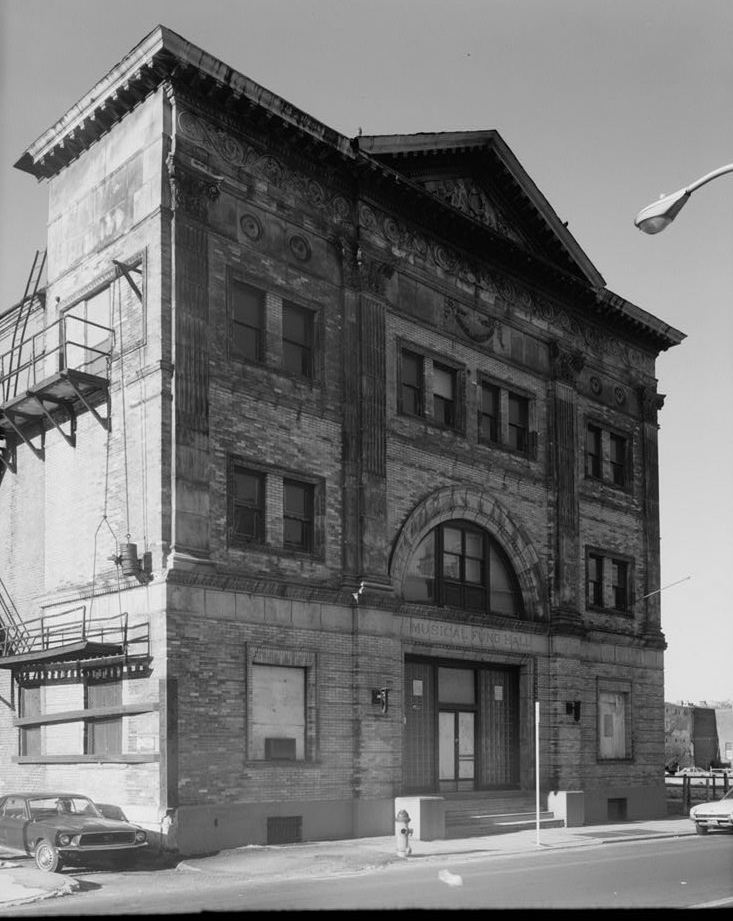Built 1824 NRHP Reference # 71000730 Added to NRHP 11 March 1971 | Architect Multiple Opened December 1824 | |
 | ||
Similar Industrial Exposition Building, Mikveh Israel Cemetery, Philadelphia Convention Hall and, Crosby's Opera House, Chicago Coliseum | ||
The Musical Fund Hall in Philadelphia, Pennsylvania is a landmark building both of architectural and historic significance, noted especially for the illustrious persons who have spoken or performed there. It is perhaps best remembered as the setting for the first Republican National Convention, June 17–19, 1856. It was listed on the National Register of Historic Places in 1971.
History
Originally the building housed the First Presbyterian Church; it was converted into the largest musical auditorium in Philadelphia by William Strickland and opened in December 1824.
Noted for its fine acoustics, the Hall was described in a newspaper review of the first concert: "The room is exceedingly neat, and its decoration does honor to the taste of Mr. Strickland, an architect of whom Philadelphia may be justly proud. It is one hundred and six feet long, sixty feet wide, and twenty-six feet high, and is admirably calculated for the conveyance of sound..." As it continued to serve as the leading concert hall in the city, the building was renovated in 1847 by Napoleon LeBrun and expanded by architect Addison Hutton in 1891.
Internationally known musical artists, authors and lecturers graced the stage of the Musical Fund Hall, including:
Renowned pianists such as Louis Gottschalk, Kossowski, Sigismond Thalberg, and Wolfsohn also appeared at the Hall.
In 1856, the first National Republican Convention was held at the Musical Fund Hall. John C. Frémont was nominated on the second ballot. William L. Dayton of New Jersey was the vice-presidential nominee.
With its busy and notable schedule of events, 1856 was the banner year for the Musical Fund Hall. By the end of the year, the 3,000-seat Philadelphia Academy of Music opened and immediately supplanted the Musical Fund Hall as the premier venue for concerts and lectures in the city. The Musical Fund Society moved its concerts to the Academy of Music in 1868.
After seeing use as (among other things) a boxing arena and a tobacco warehouse, the Hall was abandoned, then was converted into condominiums in order to save it from the wrecker’s ball. As a result of the conversion, the auditorium no longer exists. The building was removed from the list of National Historic Landmarks but it retains a position on the National Register of Historic Places.
Around 1900, the society was a main proponent in creating the Philadelphia Orchestra. In 1982, The Musical Fund Society’s document collection including manuscripts of European music as well as music by Pennsylvania composers, went to the library of the University of Pennsylvania.
